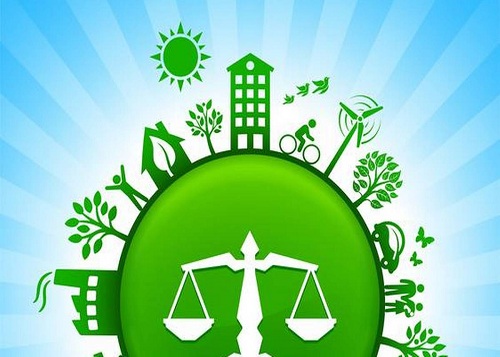The environmental impact assessment (EIA) is a statutory procedure performed in order to define the environmental impacts of a project. Another purpose of the assessment is to promote the communication to and involvement of citizens, even in the early stages of a project.
No project-related decisions are involved in the EIA as it is performed before any decisions on the licences and permits have been made. The environmental impact assessment report is mandatory when applying for a decision-in-principle concerning, for instance, a new nuclear power plant, a repository for spent nuclear fuel, or an extension to it.
What is EIA
The environmental impact assessment (EIA) is a statutory procedure in which the environmental impacts of a project are determined. The assessment is the responsibility of the party implementing the project.
The EIA studies the impacts of the project on, for example, the following issues
- human health, living conditions and comfort
- soil, water, air, climate, vegetation, organisms, their mutual interaction, and biodiversity
- community structure, buildings, landscape, townscape and cultural heritage
- utilisation of natural resources.
Purpose of the EIA Procedure
The purpose of the procedure is to
- promote the communication to and involvement of citizens, even in the early stages of the project
- highlight the environmental impacts that should be taken into consideration in the planning.
No project-related decisions are involved in the EIA, nor does it limit the citizens’ opportunities to contribute to the project in other ways. The EIA procedure is performed before any decisions on the licences and permits are made, and another of its objectives is to offer additional information for decision-making.
The environmental impact assessment report is mandatory when applying for a decision-in-pronciple concerning, for instance, a new nuclear power plant or a repository for spent nuclear fuel. When applying for a decision-in-pronciple concerning a new nuclear power plant, another decision-in-pronciple must be applied for in connection with the disposal of spent fuel from the new plant.
Stages of the EIA procedure
There are two stages in the EIA procedure: the EIA programme is first completed and the environmental impact assessment report is drawn up on the basis of the programme.
The EIA procedure sets out with the compilation of an environmental impact assessment programme (EIA programme). The EIA programme is a written plan indicating the types of environmental impacts that will be investigated and how the EIA procedure will be organised.
The programme is submitted to the Ministry of Employment and the Economy, which will request statements on it from
- the municipalities affected by the project
- different authorities
- Finnish citizens
- corporations.
The Ministry of the Environment presents the project to the authorities of the Baltic coastal states and Finland’s neighbouring states. The authorities will then organise the hearing of their own citizens and issue statements. According to law, the duration of this hearing period shall be 30-60 days. Based on the issued statements and opinions, the Ministry of Employment and the Economy will issue its own statement on the EIA programme.
An environmental impact assessment report will then be issued, based on the EIA programme and the statements issued on it. The assessment report is delivered to the Ministry of Employment and the Economy, which will collect the opinions of different parties and statements of other authorities during the hearing period and issue its own statement.
After the Ministry’s statement, a decision-in-pronciple can be applied for in the project whose environmental impacts were assessed. The environmental impact assessment report forms an enclosure to the application for a decision-in-pronciple.

